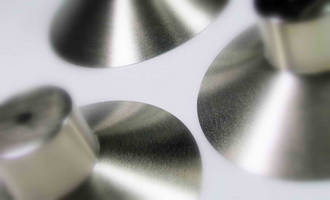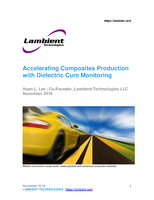Electroless Nickel Plating-Large Parts

Paramount Metal Finishing Company
Electroless Nickel plating (EN) is an auto-catalytic chemical technique used to deposit a layer of nickel-phosphorus or nickel-boron alloy on a solid workpiece, such as metal or plastic. The alloys with different percentage of phosphorus, ranging from 2-5 (low phosphorus) to up to 11-14 (high phosphorus) are possible. The metallurgical properties of alloys depend on the percentage of phosphorus.
Electroless nickel plating is an auto-catalytic reaction used to deposit a coating of nickel on a substrate. Unlike electroplating, electric current is not necessary to pass through the solution to form a deposit. This plating technique is to prevent corrosion and wear.
Electroless nickel plating has several advantages versus electroplating. Free from flux-density and power supply issues, it provides an even deposit regardless of workpiece geometry, and with the proper pre-plate catalyst, can deposit on non-conductive surfaces. [1]
Advantages include:
1. Does not use electrical power.
2. Even coating on parts surface can be achieved.
3. No sophisticated jigs or racks are required.
4. There is flexibility in plating volume and thickness.
5. The process can plate recesses and blind holes with stable thickness.
6. Chemical replenishment can be monitored automatically.
7. Complex filtration method is not required
8. Matte, Semi Bright or Bright finishes can be obtained.
Disadvantages include:
1. Lifespan of chemicals is limited.
2. Waste treatment cost is high due to the speedy chemical renewal.
Each type of electroless nickel also has particular advantages depending on the application and type of nickel alloy.[2]
Paramount provides: Medium phosphorus electroless nickel
Medium phosphorus treatment has a high speed deposit rate and offers bright and semi-bright options for cosmetic particularization. This is the most common type of electroless nickel applied.
Paramount provides: High phosphorus electroless nickel
High Phosphorus electroless nickel offers maximum corrosion resistance, making it ideal for industry standards requiring protection from highly corrosive acidic environments such as oil drilling and coal mining. With microhardness ranging up to 600 VPN, this type ensures very little surface porosity where pit-free plating is required and is least prone to staining. Deposits are non-magnetic when phosporous content is greater than 11.2%
Applications
The most common form of electroless nickel plating produces a nickel phosphorus alloy coating. The phosphorus content in electroless nickel coatings can range from 2% to 13%.[2] It is commonly used in engineering coating applications where wear resistance, hardness and corrosion protection are required. Applications include oil field valves, rotors, drive shafts, paper handling equipment, fuel rails, optical surfaces for diamond turning, and it is also commonly used as a coating in electronics printed circuit board manufacturing, typically with an overlay of gold to prevent corrosion. This process is known as electroless nickel immersion gold.
Due to the high hardness of the coating it can be used to salvage worn parts as well as in the automotive industry for wear resistance.
Paramount Metal Finishing provides electroless nickel in medium and high phosphorous to:
o MIL-C-26074
o MIL-DTL-26074
o ASTM-B733
o AMS-C-26074
o AMS-2404
o Rack and Barrel processing
o Large Parts up to 10 feet.
Visit us at www.pmf1.com




